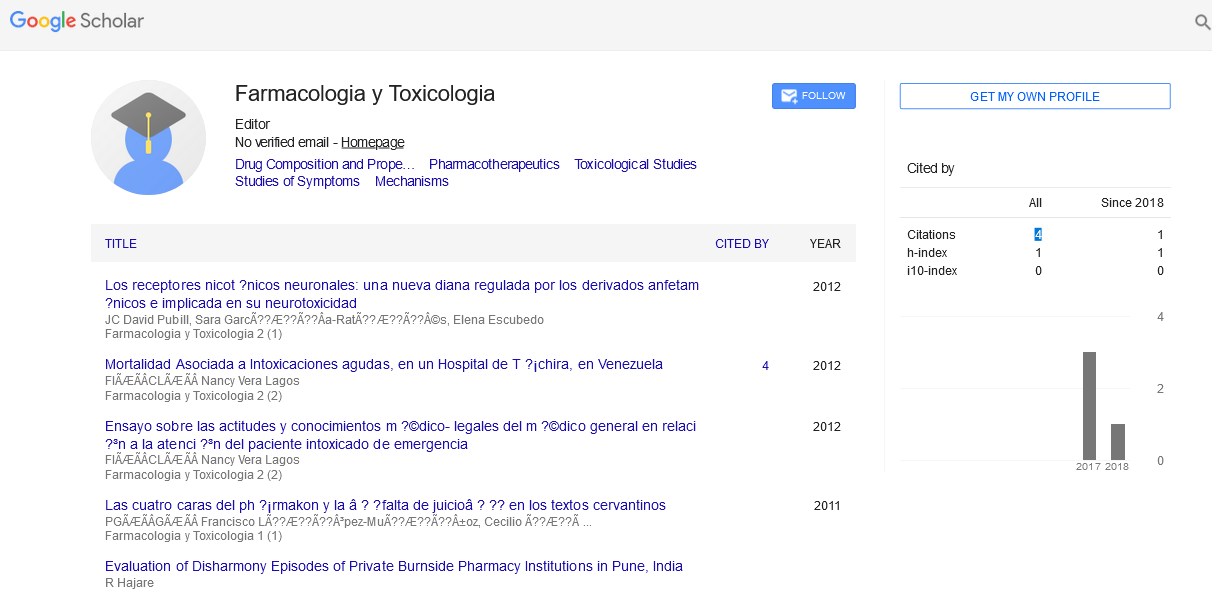Perspective - (2024) Volume 14, Issue 5
Agonists: Their Role in Pharmacology and Therapeutics
Carsten Hoffmann*
Department of Pharmacology, University of Alemieny, El Alamein, Egypt
*Correspondence:
Carsten Hoffmann, Department of Pharmacology, University of Alemieny, El Alamein,
Egypt,
Email:
Received: 07-Aug-2024, Manuscript No. IPFT-24-15128;
Editor assigned: 12-Aug-2024, Pre QC No. IPFT-24-15128 (PQ);
Reviewed: 26-Aug-2024, QC No. IPFT-24-15128;
Revised: 01-Oct-2024, Manuscript No. IPFT-24-15128 (R);
Published:
29-Oct-2024
Introduction
In the intricate world of pharmacology, agonists play a pivotal
role in modulating biological systems. These substances, by
binding to specific receptors, initiate a series of cellular
responses that can lead to various therapeutic effects.
Understanding the function and application of agonists is crucial
for developing effective treatments and managing various health
conditions.
Description
Agonist
An agonist is a chemical entity that binds to a specific receptor
and activates it to produce a biological response. Receptors are
specialized proteins located on the surface of cells or within
their interior, acting as molecular switches that mediate the
effects of neurotransmitters, hormones and drugs. When an
agonist binds to its corresponding receptor, it triggers a
conformational change in the receptor's structure, leading to a
cascade of intracellular events that result in a physiological
effect.
Types of agonists
Full agonists: These agonists bind to a receptor and produce a
maximal biological response. They have high efficacy and can
fully activate the receptor to elicit a strong response. An
example is morphine, a full agonist at opioid receptors, which
provides powerful pain relief.
Partial agonists: Partial agonists bind to receptors but
produce a less than maximal response compared to full agonists.
They have moderate efficacy and can activate the receptor to a
limited extent. Buprenorphine, used in the treatment of opioid
addiction, is a partial agonist at opioid receptors.
Inverse agonists: Inverse agonists bind to receptors and
produce the opposite effect of what is typically elicited by the
receptor’s endogenous agonists. They reduce the receptor's
activity below its baseline level. An example is the inverse
agonist of the histamine H1 receptor, which can reduce allergic
responses.
Mechanism of action
Agonists operate through a well-defined mechanism. Upon
binding to a receptor, they induce a conformational change in
the receptor's structure. This change activates intracellular
signaling pathways, often involving secondary messengers like
cyclic AMP (cAMP) or Inositol Triphosphate (IP3). These
secondary messengers then propagate the signal within the cell,
leading to various physiological effects such as muscle
contraction, neurotransmitter release or gene expression
changes.
For instance, beta-adrenergic agonists, such as albuterol, are
commonly used in treating asthma. They bind to betaadrenergic
receptors on airway smooth muscle cells, leading to
relaxation and bronchodilation, which helps alleviate asthma
symptoms.
Clinical applications of agonists
Agonists have wide-ranging applications in medicine due to
their ability to modulate physiological processes. Some notable
examples include:
Cardiovascular system: Beta-adrenergic agonists, like
dopamine and dobutamine are used to manage heart failure and
shock. They enhance cardiac output by increasing heart rate and
contractility. On the other hand, alpha-adrenergic agonists, such
as phenylephrine are employed to treat hypotension by causing
vasoconstriction.
Respiratory system: As previously mentioned, betaadrenergic
agonists such as albuterol are crucial in treating
asthma and Chronic Obstructive Pulmonary Disease (COPD) by
relaxing bronchial muscles. These agonists help open the
airways, improving breathing and reducing wheezing.
Central nervous system: Dopamine agonists, like pramipexole
and ropinirole are used in the treatment of Parkinson’s disease.
They stimulate dopamine receptors in the brain, compensating
for the loss of dopamine-producing neurons and improving
motor symptoms.
Pain management: Opioid agonists, including morphine and
oxycodone, interact with opioid receptors in the brain and spinal
cord to provide analgesia. These drugs are essential in managing
severe pain, such as that associated with cancer or surgery.
Endocrine system: Hormone agonists, like insulin, act on
specific receptors to regulate glucose metabolism. Insulin
agonists bind to insulin receptors, facilitating glucose uptake by
cells and thereby controlling blood sugar levels in diabetic
patients.
Challenges and considerations
While agonists offer significant therapeutic benefits, their use
is not without challenges. The efficacy of agonists can vary
depending on individual patient factors and the specific receptor
subtype targeted. Moreover, the potential for side effects and
drug interactions necessitates careful dosing and monitoring.
For example, opioid agonists can lead to tolerance,
dependence and addiction with prolonged use. Therefore,
managing these medications requires a careful balance between efficacy and safety. Similarly, beta-adrenergic agonists can
sometimes cause unwanted cardiovascular effects, such as
tachycardia or hypertension.
Conclusion
Agonists are fundamental to the field of pharmacology,
serving as key tools in the development of therapeutic agents.
By binding to and activating specific receptors, they can induce a
wide range of physiological responses that are harnessed for
clinical benefits. Understanding the diverse types of agonists,
their mechanisms of action and their clinical applications
provides valuable insight into their role in modern medicine. As
research continues to evolve, the potential for new agonistbased
therapies promises to enhance treatment options and
improve patient outcomes across various medical conditions.
Citation: Hoffmann C (2024) Agonists: Their Role in Pharmacology and Therapeutics. Farmacologia Toxicologia, Vol.14 No.5: 043





